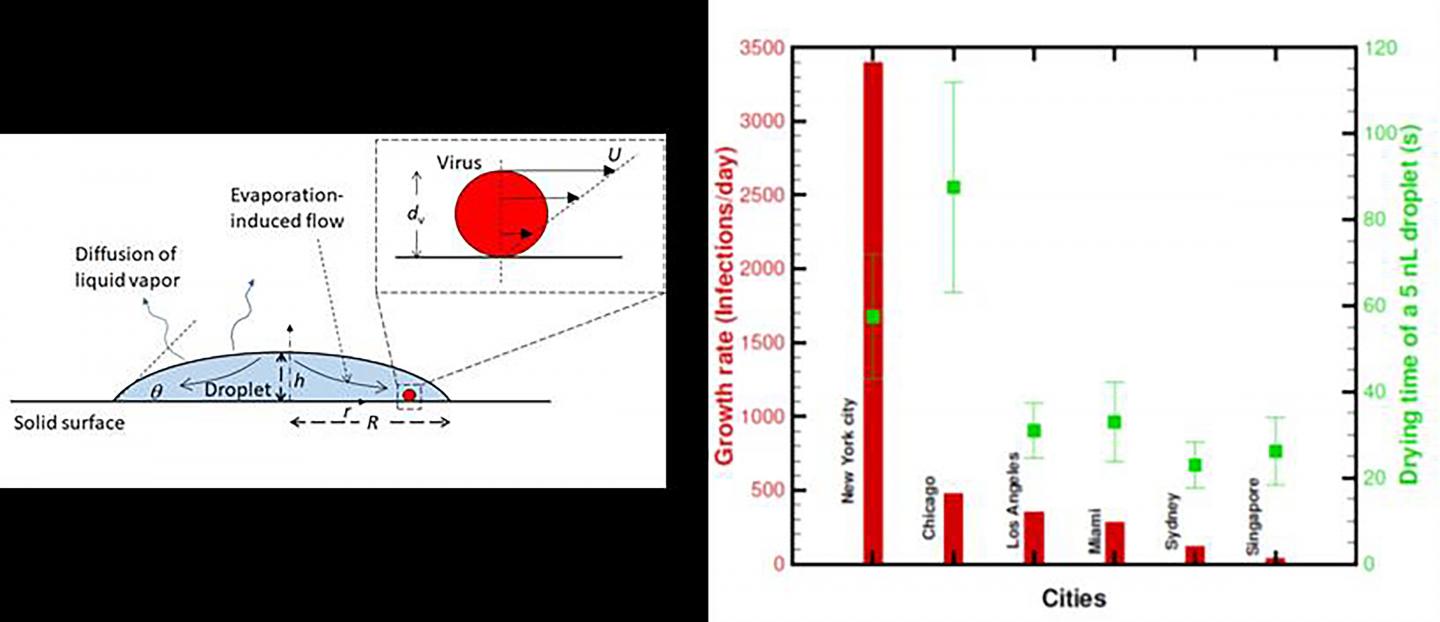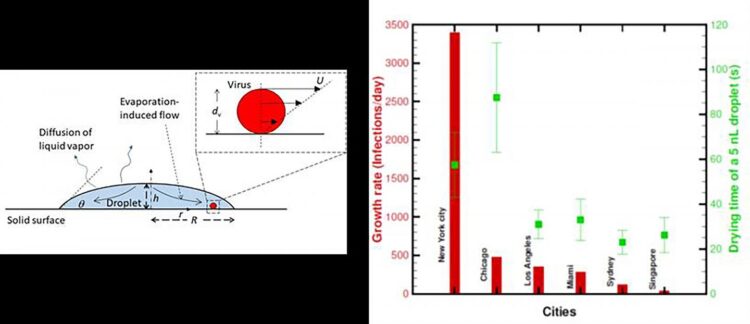Temperature, humidity, surface play roles in the drying time of COVID-19 virus respiratory droplets

Credit: Rajneesh Bhardwaj and Amit Agrawal
WASHINGTON, June 9, 2020 — One of the many questions researchers have about COVID-19 is how long the coronavirus causing the disease remains alive after someone infected with it coughs or sneezes. Once the droplets carrying the virus evaporate, the residual virus dies quickly, so the survival and transmission of COVID-19 are directly impacted by how long the droplets remain intact.
In a paper in Physics of Fluids, by AIP Publishing, researchers examine the drying time of respiratory droplets from COVID-19-infected subjects on various surfaces in six cities around the world. These droplets are expelled from the mouth or nose when someone with COVID-19 coughs, sneezes or even speaks moistly. The droplet size is on the order of human hair width, and the researchers examined frequently touched surfaces, such as door handles and smartphone touchscreens.
Using a mathematical model well established in the field of interface science, the drying time calculations showed ambient temperature, type of surface and relative humidity play critical roles. For example, higher ambient temperature helped to dry out the droplet faster and drastically reduced the chances of virus survival. In places with greater humidity, the droplet stayed on surfaces longer, and the virus survival chances improved.
The researchers determined the droplet drying time in different outdoor weather conditions and examined if this data connected to the growth rate of the COVID-19 pandemic. Researchers selected New York, Chicago, Los Angeles, Miami, Sydney and Singapore and plotted the growth rate of COVID-19 patients in these cities with the drying time of a typical droplet. In the cities with a larger growth rate of the pandemic, the drying time was longer.
“In a way, that could explain a slow or fast growth of the infection in a particular city. This may not be the sole factor, but definitely, the outdoor weather matters in the growth rate of the infection,” said Rajneesh Bhardwaj, one of the authors.
“Understanding virus survival in a drying droplet could be helpful for other transmissible diseases that spread through respiratory droplets, such as influenza A,” said Amit Agrawal, another author.
The study suggests that surfaces, such as smartphone screens, cotton and wood, should be cleaned more often than glass and steel surfaces, because the latter surfaces are relatively hydrophilic, and the droplets evaporate faster on these surfaces.
###
The article, “Likelihood of survival of coronavirus in a respiratory droplet deposited on a solid surface,” is authored by Rajneesh Bhardwaj and Amit Agrawal. The article will appear in Physics of Fluids on June 9, 2020 (DOI: 10.1063/5.0012009). After that date, it can be accessed at https:/
ABOUT THE JOURNAL
Physics of Fluids is devoted to the publication of original theoretical, computational, and experimental contributions to the dynamics of gases, liquids, and complex or multiphase fluids. See https:/
Media Contact
Larry Frum
[email protected]
Related Journal Article
http://dx.





